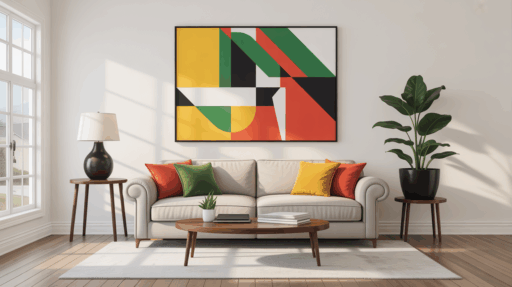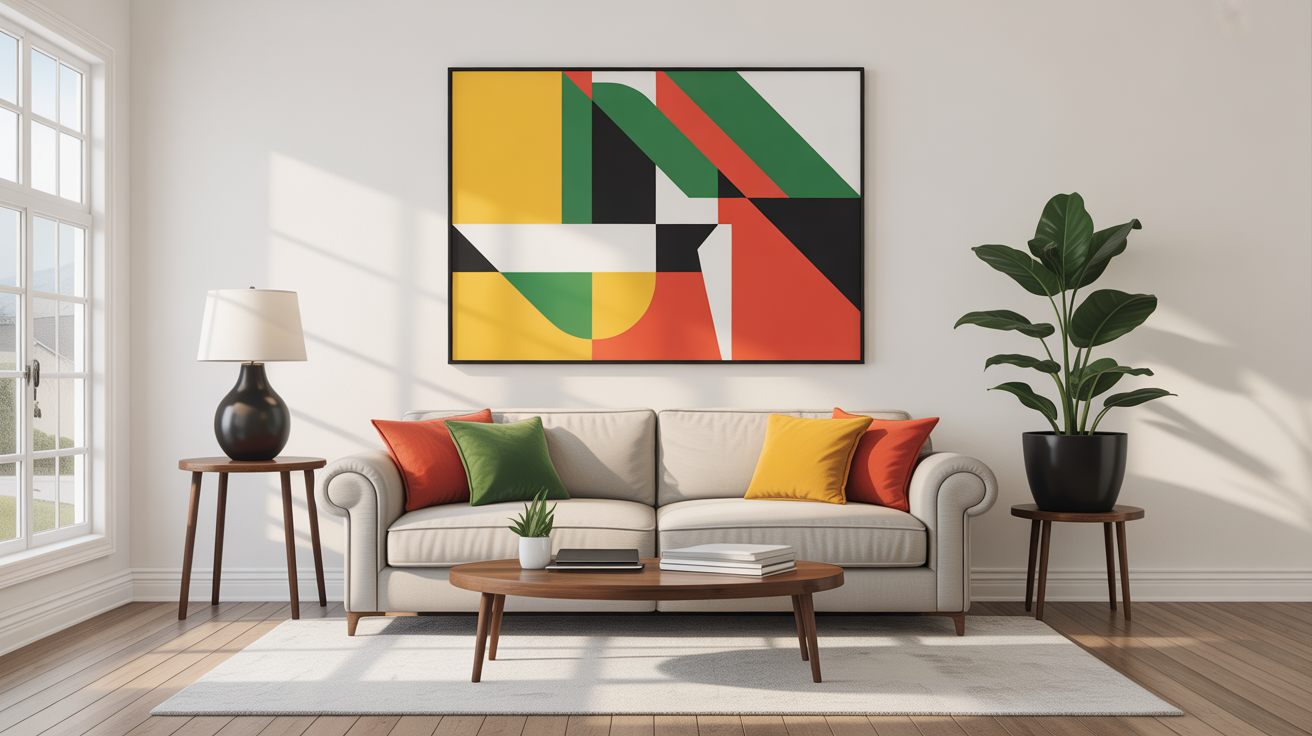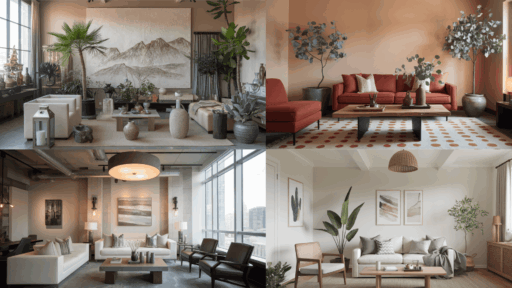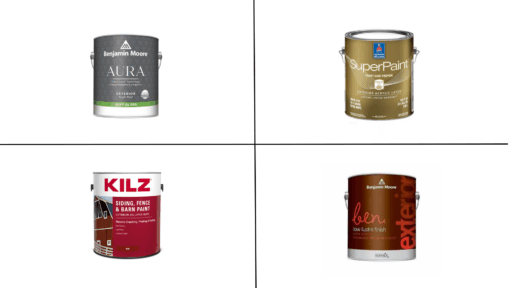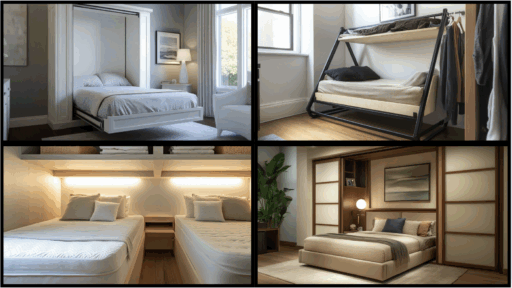First impressions sell homes. You can have spotless countertops and fresh paint, but if the space doesn’t spark curiosity or stir emotions within the first few seconds, buyers move on—mentally, if not physically. While neutral furniture sets the stage, it’s often the bold touches that steal the show.
That’s where bold wall art comes in. Not just a pretty decoration—it’s a strategy. The right piece of art doesn’t just sit on the wall; it speaks to people. It creates mood, adds depth, and can help a potential buyer feel something real. And when people feel something, they remember.
The Psychology Behind Art in Home Staging
Art impacts how we process a room. Visual cues help buyers decide whether a home feels “right,” even if they can’t explain why.
Think of a living room with a large abstract modern art painting—the kind that has swirls of color and dynamic movement. That piece naturally becomes a focal point. It pulls the eye in, then leads it across the room. Without saying a word, it tells your buyer, this is a space with character.
Now imagine a blank wall instead. There’s no emotion, no guide for the eye, no lasting memory. The room might feel forgettable, even if everything else is perfect.
Bold art also helps people picture themselves living in the space. A well-placed canvas can make a house feel like a lifestyle, not just a property. It adds warmth, sparks imagination, and gives just enough personality to make the place feel alive—without being too specific.
Choosing the Right Art for the Right Room
Art isn’t one-size-fits-all. Each room has a rhythm, and the art needs to play in harmony.
Living rooms can handle statement pieces—oversized canvases, bold lines, even textured urban art paintings that give a touch of edge or city style. These types of pieces suggest confidence and creativity, which subtly signal sophistication to your buyer.
In bedrooms, tone it down. Go for pieces that feel calming—soft colors, serene imagery, or gentle abstract forms. The goal is to make the space feel like a retreat. Think: “I could fall asleep here tonight.”
Entryways and hallways are prime real estate for first impressions. That’s your chance to go bold but intentional. Something energetic—maybe a piece with movement or a unique subject matter—can immediately elevate the entire space. The art there sets the tone for what’s to come.
And yes, even kitchens can benefit from art. Small framed prints with food themes, botanical sketches, or clean geometric designs can bring warmth and cohesion without clutter. Just keep it subtle and tasteful—no need for a giant fork-and-spoon set.
Color Strategy: Using Art to Balance or Enhance a Room’s Palette
Wall art is one of the easiest ways to inject color and still keep things polished.
Say your living room is mostly beige and white. Add a canvas with deep blues and golds. Now, pick up those tones in your throw pillows or a small area rug. Suddenly, the whole space feels curated, not thrown together.
Even in neutral rooms, art can be your contrast. A black-and-white palette gains depth when paired with a striking pop of color on the wall. But remember: bold doesn’t mean chaotic. Use color intentionally. Pull shades from your artwork to subtly echo across the space—on cushions, vases, or even a single accent chair.
When everything speaks the same visual language, buyers notice. They might not say it out loud, but they’ll feel it. And that emotional consistency can be the thing that nudges them toward a yes.
Scaling Artwork to Fit the Space
Size matters. A lot.
A tiny framed print on a big blank wall just feels sad. It makes the space feel emptier than if there were nothing there. On the flip side, an oversized canvas squeezed into a narrow hallway creates visual tension—and not the good kind. Here’s the rule of thumb: the art should take up about two-thirds to three-quarters of the width of the furniture it hangs above.
Gallery walls work great when you want variety, but they take effort. Lay them out on the floor first. Use consistent spacing. Stick to a color or frame theme. And don’t overdo it. The goal is cohesion, not chaos.
Always hang art at eye level—around 57–60 inches from the floor to the center of the piece. And make sure it’s centered above your furniture. Off-center art creates awkward tension that throws off the balance of the whole room.
Budget-Friendly Art Options That Look High-End
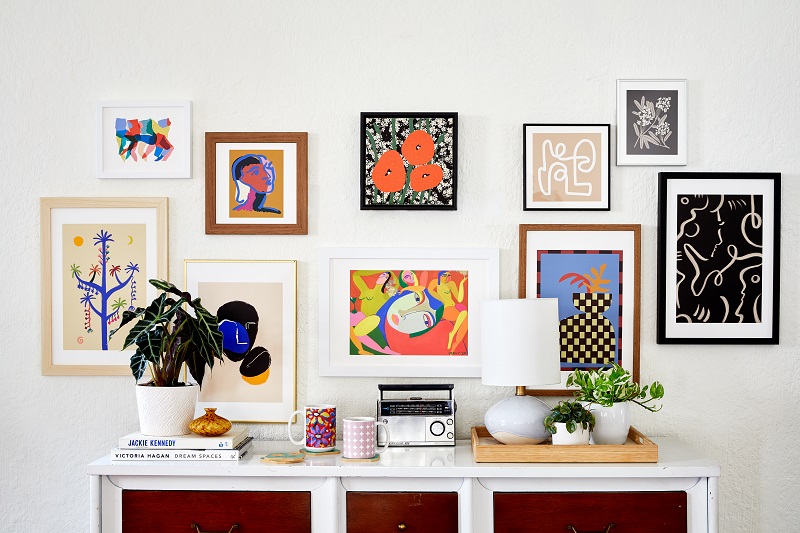
Great art doesn’t have to cost thousands. In fact, staging budgets rarely allow for that. Luckily, there are plenty of affordable options with a wow factor.
Framed prints and canvas reproductions offer excellent value. Choose high-resolution prints that mimic the feel of original abstract modern art paintings, or go for minimalist line drawings for a clean, upscale look.
Another option? Rent artwork. Some staging companies or art leasing services allow you to borrow bold, high-end pieces temporarily. Perfect for luxury listings or model homes where visual impact matters.
And don’t underestimate framing. A cheap print can look like gallery-quality work when it’s placed in a sleek black or gold frame with a clean mat.
Common Mistakes to Avoid
There’s a fine line between personal and personalized. Family portraits, political pieces, or anything controversial? Leave them out. Buyers aren’t walking through your life—they’re trying to imagine theirs.
Also, mismatched themes can break the flow. A rustic wood sign in a modern condo just feels off. Stick to a consistent style that supports your staging goals.
Don’t ignore scale. One tiny frame on a big wall can make the room feel unfinished. Too many small pieces scattered randomly? That’s clutter. And it confuses the eye.
Lastly, don’t hang art too high. It shouldn’t feel like you need binoculars to appreciate it.
Using Art to Tell a Story
Great staging tells a subtle story, and art is one of the best tools to do that.
Start with one room, then carry that mood through the house. If your entry has a modern cityscape, maybe your hallway features abstract lines that echo the movement. Let each piece relate to the next—not match, but complement.
This creates a sense of flow. It gently guides buyers through the home, helping them feel a lifestyle taking shape. It’s less about what the art says and more about how it makes people feel.
In many ways, bold art becomes your silent “tour guide.” It invites buyers to look longer, feel more, and remember the space long after they leave.
Conclusion
Wall art isn’t just a finishing touch. It’s a powerful tool for shaping how buyers see—and feel—your home. Done right, it elevates your staging from generic to memorable.
So if you’re preparing a home for sale, don’t stop at furniture and flowers. Be bold. Be strategic. Use art to leave a lasting impression that helps buyers fall in love before they even realize it.

